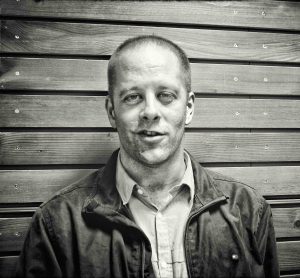Tamas Dobozy on his literary life after Siege 13
May 6, 2013
By Kevin Burns
 Tamas Dobozy is fascinated by four key moments in Hungarian history because of the way he thinks they continue to inform the present. He says they are four powerful elements of a history that is still very much alive today and that when he writes he is in a dialogue with that history. Dobozy’s historical “quartet” begins in 1920 and the Treaty of Trianon’s imposition of rigid restrictions on the former Austro-Hungarian empire that also re-drew Hungary’s borders. Next, it’s the Red Army’s “bloody Siege” of 1944 and the subject of Siege 13, for which he was nominated for a Governor General’s Literary Award and for which he also received the 2013 Rogers Writers’ Trust Fiction Prize. Then it’s the 1956 Revolution and, finally, the fall of the Berlin wall and the resulting withdrawal of Soviet Armies from Eastern and Central Europe. “That’s definitely something I keep coming back to, those four events,” he says, musing on them as the possible framework for a quartet of interlinked books he might eventually write.
Tamas Dobozy is fascinated by four key moments in Hungarian history because of the way he thinks they continue to inform the present. He says they are four powerful elements of a history that is still very much alive today and that when he writes he is in a dialogue with that history. Dobozy’s historical “quartet” begins in 1920 and the Treaty of Trianon’s imposition of rigid restrictions on the former Austro-Hungarian empire that also re-drew Hungary’s borders. Next, it’s the Red Army’s “bloody Siege” of 1944 and the subject of Siege 13, for which he was nominated for a Governor General’s Literary Award and for which he also received the 2013 Rogers Writers’ Trust Fiction Prize. Then it’s the 1956 Revolution and, finally, the fall of the Berlin wall and the resulting withdrawal of Soviet Armies from Eastern and Central Europe. “That’s definitely something I keep coming back to, those four events,” he says, musing on them as the possible framework for a quartet of interlinked books he might eventually write.
Dobozy is in Ottawa for the Ottawa Writers Festival. The critical acclaim for his work, Siege 13, has changed a lot in his teaching and writing life. He is now a fully-fledged member of the “Can-Lit” machine, with book tours, signings, festivals, and interviews. The success of Siege 13 also means that publishers now approach him with invitations to sign-up with them for future work. When he’s not writing, he teaches 20th Century American Literature at Wilfrid Laurier University, in Waterloo. There, departmental officials now want him to add Creative Writing to the list of literature courses he already teaches. “I’m incredibly lucky as a writer, I’m a tenured professor. I don’t need to worry about the big advance or the splashy publicity machine, or any of that business. I’m really free, liberated from those sorts of financial pressures which means that I can go to presses that I like rather than presses that pay me the most.”
Amidst all the changes that success brings, some things remain constant for him: his abiding fascination with the relationship between fact and fiction. His stories are filled with real moments from history, but he does not approach these events as a historian. “I think we have to distinguish what is a fact and what is history,” cautions Dobozy. “History starts when we ask: who did it? Why? For what reason?” When you begin to link the “facts” of history in what he describes as “a narrative chain” you inevitably introduce ideology “with a system of sorting and evaluation.” Different people can address the same facts with very different “sorting systems.” This tension is at the core of much of Dobozy’s fiction. “Often in my stories what you will get are two people sorting events in radically different ways and different narratives emerge on the basis of the same group of facts.”
I ask him if this fascination with history and fiction could become an obsession. After a moment’s pause, he says, “My primary writerly obsession is the slipperiness of memory and the way history becomes manipulated to enable certain kinds of ideological or personal agendas. And second of all, the incredible damage caused by political, moral, and spiritual certainty. All my villains are people who are absolutely sure that they know the truth and it is that power, that passionate conviction, that is enemy Number One in my work.”
Like many creative artists who straddle two cultures, Dobozy says he is aware of “always looking for the other half.” His experiences – born in Canada, living in Hungary for a few years, retuning to Canada, writing in English, strong family and cultural links back to Hungary – all seem to create an uneasy sense of identity. “I definitely don’t feel at home fully in either country. Even growing up I was always bedevilled by a sense of being an outsider.” And then he adds, “I’m interested in the way that for people like me home is a kind of impossible concept. You are never really at home, you are always looking elsewhere for the other half, in whatever place you are.”
The unfinished business of that kind of search will likely be a component of his next work, though as with many writers, this is something he is reluctant to explain. He does offer a hint, though, about what the next Dobozy title might deal with: “1956 is increasingly emerging as a prominent centre of gravity for these stories.”
Here are three short audio portions from the Tamas Dobozy interview:
Clip One: On Fact and Fiction
Clip Two: On the Four Events of 20th Century Hungarian History
Clip Three: On Never Feeling “At Home”
See other items on Tamás Dobozy on this website.
